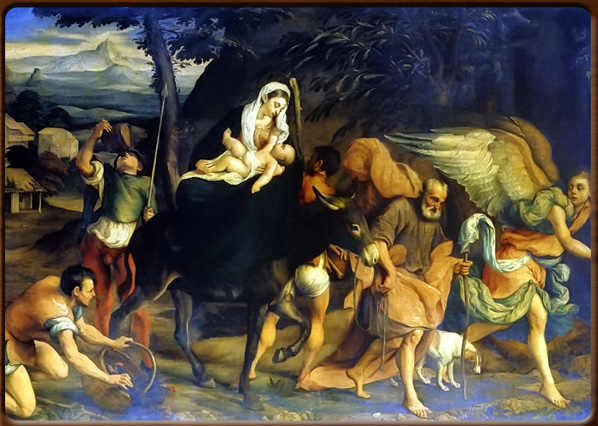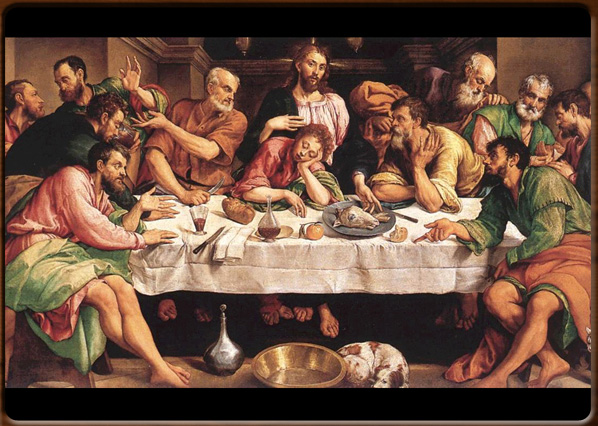
Flight into Egypt. Jacopo Bassano, 1535, Museo Civico, Bassano.

The Last Supper. Jacopo Bassano, 1550-60, Galleria Borghese, Rome.


No video
Jacopo Bassano (Bassano del Grappa in the province of Vicenza, 1515-1592) was an established painter in the Veneto region, son of the painter Francesco il Vecchio.
He started his career by working for his father and then moved to the Bonifacio Veronese workshop in Venice.
He later returned to Bassano del Grappa to open his own workshop, which proved very successful.
His earliest works – "Fuga in Egitto" (1535) in the Civic Museum in Bassano del Grappa and "Disputa al tempio", Oxford – show how Bassano was aware of the Lombard naturalist style and Raphael’s work.In the mid 1500s, Bassano benefitted from his contacts with German prints and painted a few Mannerist works (Martyrdom of St. Catherine, 1534-35, now in the Bassano del Grappa Civic Museum, and Decollation of St. John the Baptist, 1540-50, Statens Museum for Kunst, Copenaghen).
He further developed his style to make larger use of colour and contrast ("Virgin with Saints Martin" and "Anthony the Abbot", Alte Pinakothek in Munich; "Last Supper", 1550-60, Galleria Borghese in Rome). In or around 1570 he painted his "St. John the Baptist" (Bassano del Grappa Civic Museum) and "Adoration of the Magi" (Kunsthistorisches Museum, Vienna).
During his last few years, he produced a series of figurative paintings depicting animals, still life and human poses, a foretaste of Venetian painting in the 17th Century.
1500 - - rev. 0.1.5